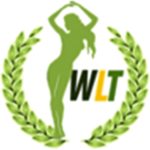Are you interested in eating like your prehistoric grandparents? The Paleo diet might be just the thing you are looking for. There are some key differences between the Paleo diet and the kind of diet most humans eat today.
To start with, meat is very important in a Paleolithic diet, yet most people today try to limit how much meat they eat. During caveman times, meat was a huge part of where the calories came from. In a typical Paleo diet plan, meat accounts for a large part of caloric intake. In addition, many Stone Age diet practitioners only eat grass-fed, free-range meat to get as close to paleo meat as they can.
Fruit is an important part of many people’s diets today. It was important in the Neanderthal diet as well. Hunter gatherers picked many types of berries and fruit to supplement their diets. Paleo purists would caution against processed juices. Raw, whole fruit is what should be eaten.
The part of the primal diet that is perhaps most different from current diet guidelines includes grains, beans, and legumes. All these are to be avoided in a typical hunter-gatherer diet. The argument the caveman diet experts make is that human ancestors did not cook grains, or harvest beans and legumes until later in the evolutionary process. Because of this, the human body is not set up to process and digest those kinds of foods as well as it can process and digest meats and foods that were gathered from the land like fruits and nuts, the basis of a hunter gatherer diet.
This is quite different from current guidelines that propose humans should eat plenty of beans and legumes. Whole wheat and grain products are all over supermarkets. Oatmeal is a wonder food in current diets, lowering cholesterol, making one feel fuller longer because of its soluble fiber. People today who are concerned about animal cruelty eat less meat and look to beans and legumes for their protein sources. Peanuts and peanut butter are another of today’s super foods. Yet all of these are not part of the Paleo diet.
Dairy is an area of contention among people who practice Paleolithic nutrition. Some say dairy is fine to enjoy, and others say dairy was not consumed until animals were domesticated. Even primal diet proponents who say dairy is acceptable try to get organic sources that have been minimally processed.
Fats are an important part of a Paleo diet, but certain ones should be avoided. Of course, they are the ones that are readily available in most supermarkets. Olive oil is permissible, as well as all the fats in meats and nuts. But most oils that are used for cooking today are not good ones for a primal diet.
Many people, especially athletes, have tried Paleo nutrition and have reported they feel better than on high-carb, low-fat diets. Many lose weight without feeling like they have to count calories or feel hungry. They say they sleep better and are more alert when awake. They follow the natural sleep cycles of sleeping when the sun goes down and getting up when it rises. The proof will be in the future, when long-term effects can be measured. Perhaps the best measured effects today are those measuring how the paleo diet works for athletes, and those results are encouraging so far.





